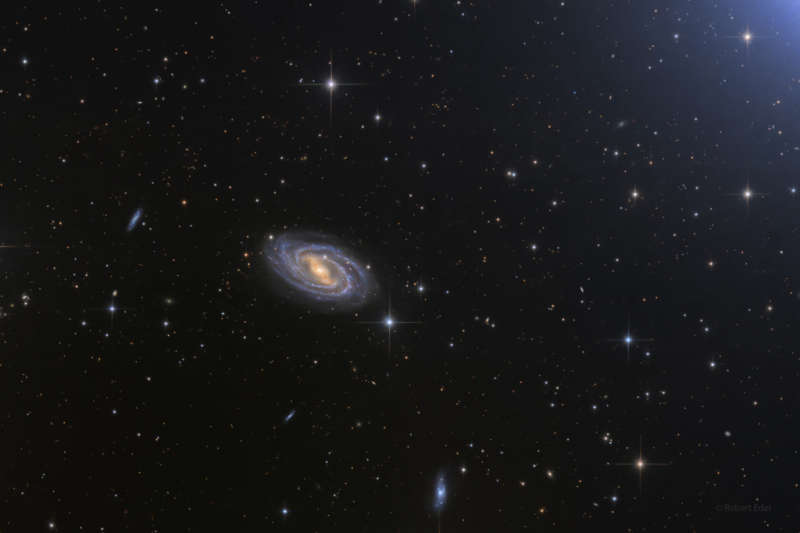
|
Credit & Copyright: Robert Eder
Explanation:
Big beautiful barred spiral
galaxy
Messier 109
is the 109th entry in Charles Messier's famous catalog of bright
Nebulae
and Star Clusters.
You can find it
just below the Big Dipper's bowl in the
northern constellation Ursa Major.
In fact,
bright dipper star
Phecda, Gamma Ursa Majoris, produces
the glare at the upper right corner of
this telescopic frame.
M109's prominent central bar gives the galaxy the
appearance of the Greek letter "theta", θ, a common mathematical
symbol representing an angle.
M109 spans a very small
angle in planet
Earth's sky though, about 7 arcminutes or 0.12 degrees.
But that small
angle corresponds
to
an enormous 120,000 light-year diameter
at the galaxy's estimated 60 million light-year distance.
The brightest member of the now
recognized
Ursa Major galaxy cluster, M109 (aka NGC 3992) is joined by
spiky
foreground stars.
Three small, fuzzy bluish galaxies also on the scene, identified
(top to bottom) as UGC 6969, UGC 6940 and UGC 6923,
are possibly satellite galaxies of the larger barred spiral galaxy
Messier 109.
|
January February March April May June July August September October November December |
| |||||||||||||||||||||||||||||||||||||||||||||||||||||||
NASA Web Site Statements, Warnings, and Disclaimers
NASA Official: Jay Norris. Specific rights apply.
A service of: LHEA at NASA / GSFC
& Michigan Tech. U.
Based on Astronomy Picture
Of the Day
Publications with keywords: barred spiral galaxy
Publications with words: barred spiral galaxy
See also:
